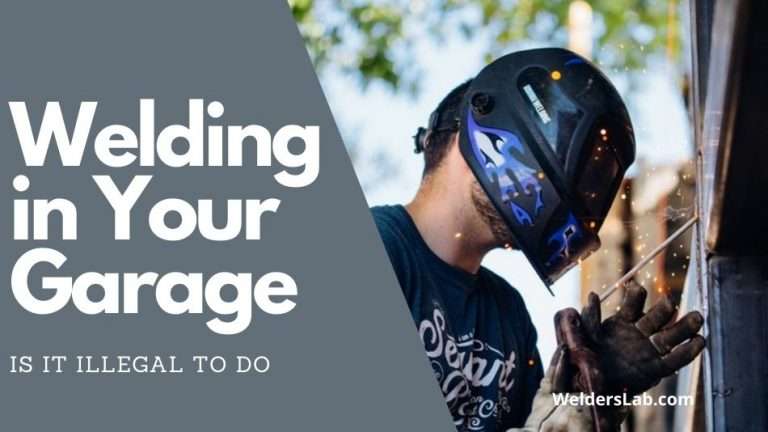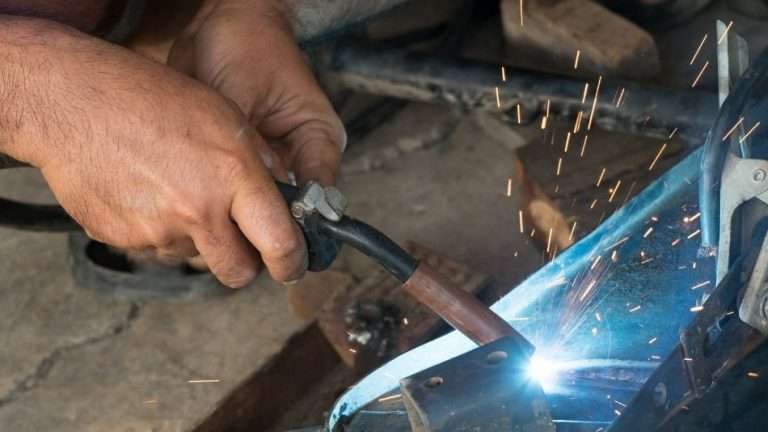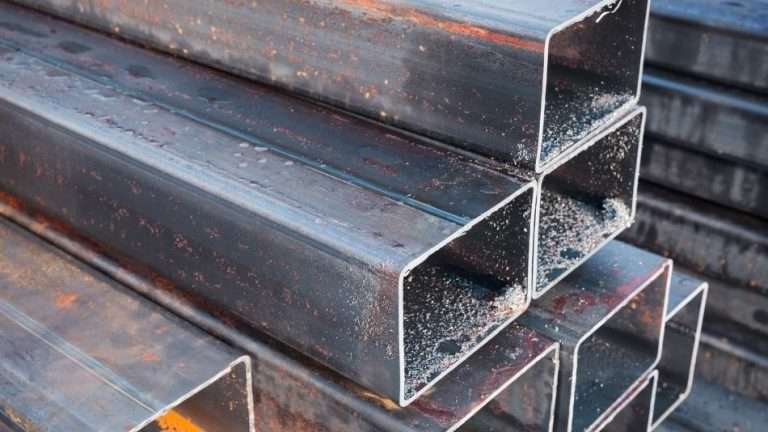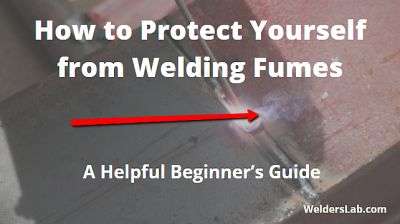Why Do Welders Drink Milk – Myth or Fact
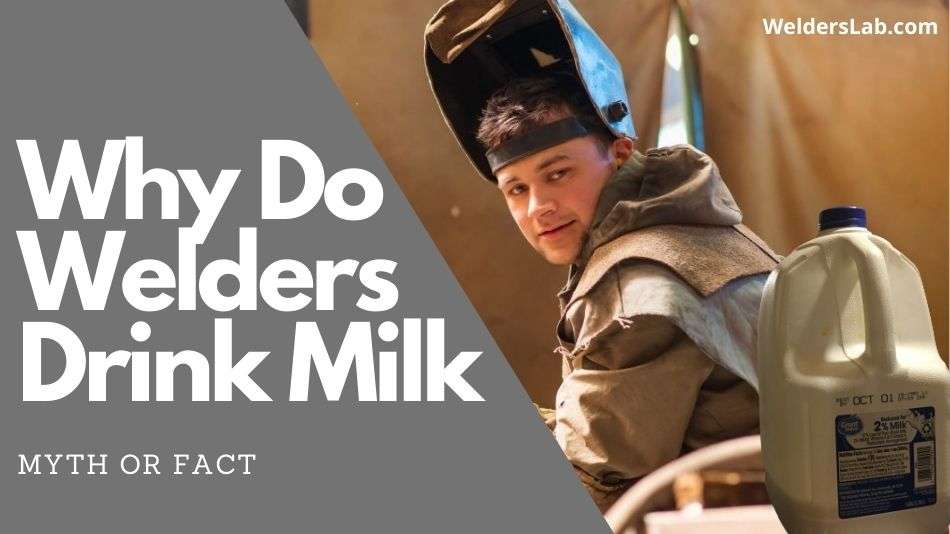
Welders are often told to drink milk as a safety precaution. Some believe milk provides a healthy resistance to dangerous chemicals produced by the welding process. It is often a source of debate among seasoned welders and rookies alike. Just sit down with a group of them and ask the question, “Why do welders drink milk?” You will be in for an interesting discussion.
Welders drink milk as a treatment for metal fume fever. Metal fume fever is an illness caused by exposure to chemicals like zinc oxide, aluminum oxide, or magnesium oxide. These are chemicals that are produced primarily by heating certain metals.
Prolonged exposure to welding fumes can cause severe damage and it is important that you protect yourself. More than likely, milk will not provide adequate protection from the fumes produced while welding certain metals.
In this article, we will explore the myth surrounding this topic. We will also look at the best way to protect yourself from dangerous fumes and gasses while welding. Let us begin with an examination of what many welders have believed for years, that drinking milk before welding is a remedy for metal fume fever.
What does milk do for a welder?
There are two schools of thought on how milk can help welders.
Myth: Many people believe that calcium in milk will fill the spaces that zinc oxide and other heavy metals might get into. This more than likely comes from an old misunderstanding about how minerals function in the body.
Fact: The fact is fumes and gasses from welding enter the body through the respiratory system and not the digestive system. Milk never reaches the breathing apparatus of the human body.
Myth: Another idea is that it acts as a filter. Some welders have believed for years that if you hold milk in your mouth while welding it will protect you from metal fume fever.
Fact: The problem with this solution is the fact that they are still breathing through their nose. The fumes and gasses will get in that way. In the end, the idea that milk protects you from any toxins associated with welding is not backed up by science.
Does milk really help you avoid welding fumes?
The flu-like symptoms of metal fume fever are:
- nausea,
- fatigue,
- fever,
- chills,
- headache,
- joint pain,
- high blood pressure,
- pneumonia,
- chest pain,
- and in some extreme cases can result in a prolonged hospital stay.
A sweet or metallic taste in the mouth is also associated with metal fume fever. Other symptoms include a dry or irritated throat which may cause the sufferer to go hoarse.
In more severe cases of metal fume fever (metal toxicity), there may be a burning sensation in the body, the occurrence of shock, and a reduction of urine output.
Related Article: How to Protect Yourself from Welding Fumes – Beginner’s Guide
In some cases, victims have been known to collapse, experience convulsions, shortness of breath, yellowing of the skin or eyes, a severe rash, vomiting, watery or bloody diarrhea, and dramatic changes in blood pressure, all of which require immediate medical attention.
All that being stated, there is no scientific evidence that supports the claim that milk will somehow protect you from the dangers of toxic welding fumes.
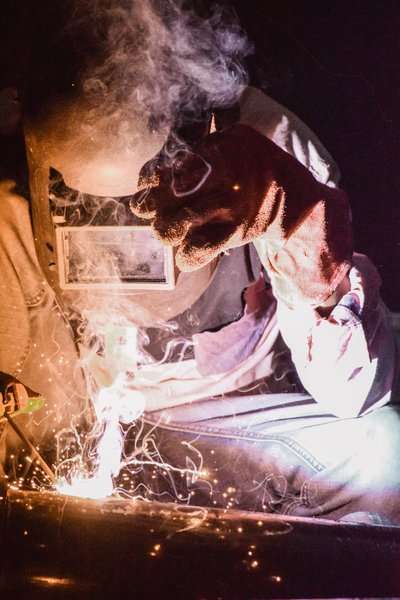
As stated previously, milk enters the body through the digestive system while zinc oxide, aluminum oxide, and magnesium oxide enter through the respiratory system.
Theses toxins are coming into the body and being distributed by the respiratory and circulatory system in the same way cigarette smoke is distributed.
Their effects take place at the cellular level and intense, long-term exposure to metal oxide fumes can cause permanent damage and may even kill you.
So, the answer is unequivocally no, milk does not protect you from the dangers of toxic welding fumes. Verified scientifically, milk does not affect toxic welding fumes and the damage they can do to the human body.
The National Poison Center recommends against the use of milk as a treatment or preventative for poisoning. Milk may increase the absorption rate in which poison enters the body.
What helps you avoid welding fumes is proper ventilation, up to date safety equipment, and following proper protocols when welding. It is important to make sure your equipment is maintained, and your welding area is open rather than closed off.
Keeping windows open and a shop fan going will greatly reduce the risk of inhaling toxins. Make sure your shop fan is positioned so it draws fumes and particulates away from the welding area. Always stay out of the path of the fumes.
So why do welders drink milk as a preventative for metal fume fever? Well, it has become a tradition in many circles. It is very likely that most modern welders are very much aware that milk cannot prevent metal toxicity.
What are the better options?
There are many better options when it comes to protecting yourself from welding fumes. Protective equipment and gear will be a far better remedy.
When you want to be safe and secure while welding, advancements in technology and safety are your best option.
- Fume extractors,
- respirators,
- welding curtains,
- and other safety equipments are now the norm in most fabricators, metal, and welding shops globally.
If you are a home welder, most of the equipment and safety gear necessary for protection is available online.
Start with a Well Ventilated Area
But what if you do not have access to fume extractors or respirators? Well, there are things you can do right away. One is to make sure you are welding in a well-ventilated area.
Open windows and doors so that fumes and dangerous gasses can escape. The more ventilation you can provide, the better. If you have access to a shop fan, be sure to direct it so that it is removing fumes from the welding area.
You can also keep your face away from the direct path of the smoke produced by welding. Cinching your welding helmet close to your face will also help. This is not the best way to prevent exposure, but it will help in a pinch.
Do everything you can to avoid inhaling the fumes. Always remember to wear proper clothing while you are welding. It may even be prudent to tie a scarf around your mouth and nose.
One final thing you can do is to turn on an overhead fan. As fumes come off the weld they can build up in your work area, but if you turn on an overhead fan and open a door you’ll be able to push the fumes outside out of your area.
Welding Respirator Helmet
If you are considering upgrading your safety equipment, it may be a good idea to look at a purifying respirator helmet.
The 3M Adflo Powered Air Purifying Respirator Helmet features auto-darkening filters that meet national standards, an adjustable head suspension for a comfortable fit, and a high-efficiency particulate filter.
This piece of equipment will cost a little more, but it will do a good job of protecting you. You’re looking at a price range between $400.00 to $1300.000, depending on the model and features you choose.
Fume Extractor
A quality welding fume extractor will greatly reduce the risks of inhaling toxic chemicals. Fume extractors work by drawing fumes and particulates away from the welding area and into a high-quality filtration system.
Fume extractors come in a variety of sizes and price ranges. They are also available in various levels of quality and power.
Weld fume extraction machines come in portable benchtop models and high-end industrial models. Ranging in price from $50.00 to $120.00 all the way up to $1500.00 to $5000 or more. You can often find them used if you look on eBay, Craigslist, and other online selling platforms.
When picking your welding safety equipment and personal protective gear make sure you do your research. Look for products that are going to serve you in the best capacity according to your needs.
Check review sites and all your favorite welding blogs and podcasts. With a little time, you will be able to find exactly what you need at a price that fits your budget and safety requirements.
Conclusion
For years, welders believed that milk would prevent metal fume fever and other damaging effects of toxins produced from welding.
The idea that calcium in milk would somehow counteract the damage of inhaling zinc oxide, magnesium oxide, or other heavy metal fumes likely stems from old wife’s tales and a misunderstanding of basic science.
The responsibility for your safety lies with you. The more up to date you can become on knowledge of welding safety, the better off you will be.
Using proper, modern safety equipment like powered air-purifying helmets and weld fume extraction machines will ensure that the air around you does not make you sick.
Remember that long term exposure to the toxic fumes produced while welding can produce real and permanent damages to your lungs and the rest of your body.
Metal fume fever is a well-documented disease that comes from long term exposure to, and inhalation of metal oxide fumes. It can cause life-threatening damage and is nothing to play around with.
Ensuring your safety and the safety of those around you should be your paramount concern when welding. Be safe. Follow the advice presented here or consult the many sources online on the best way to protect yourself from toxic welding fumes.




